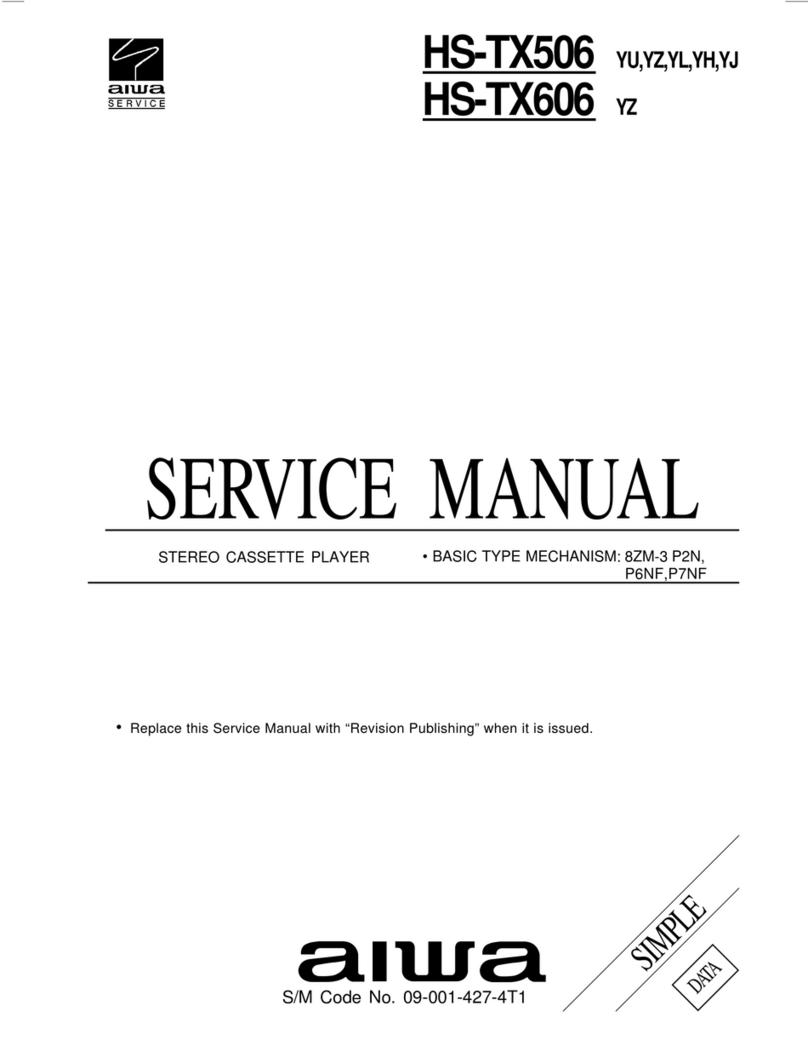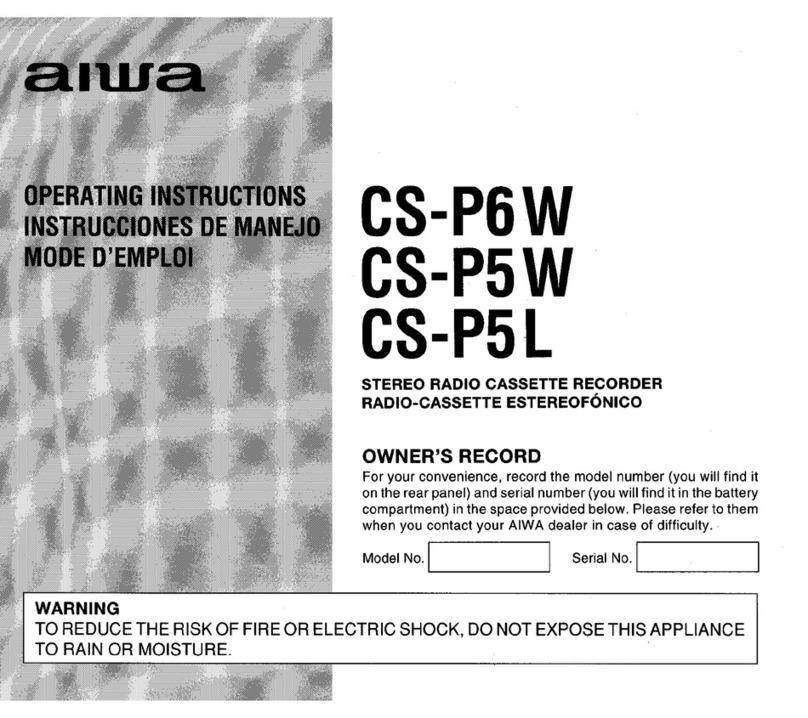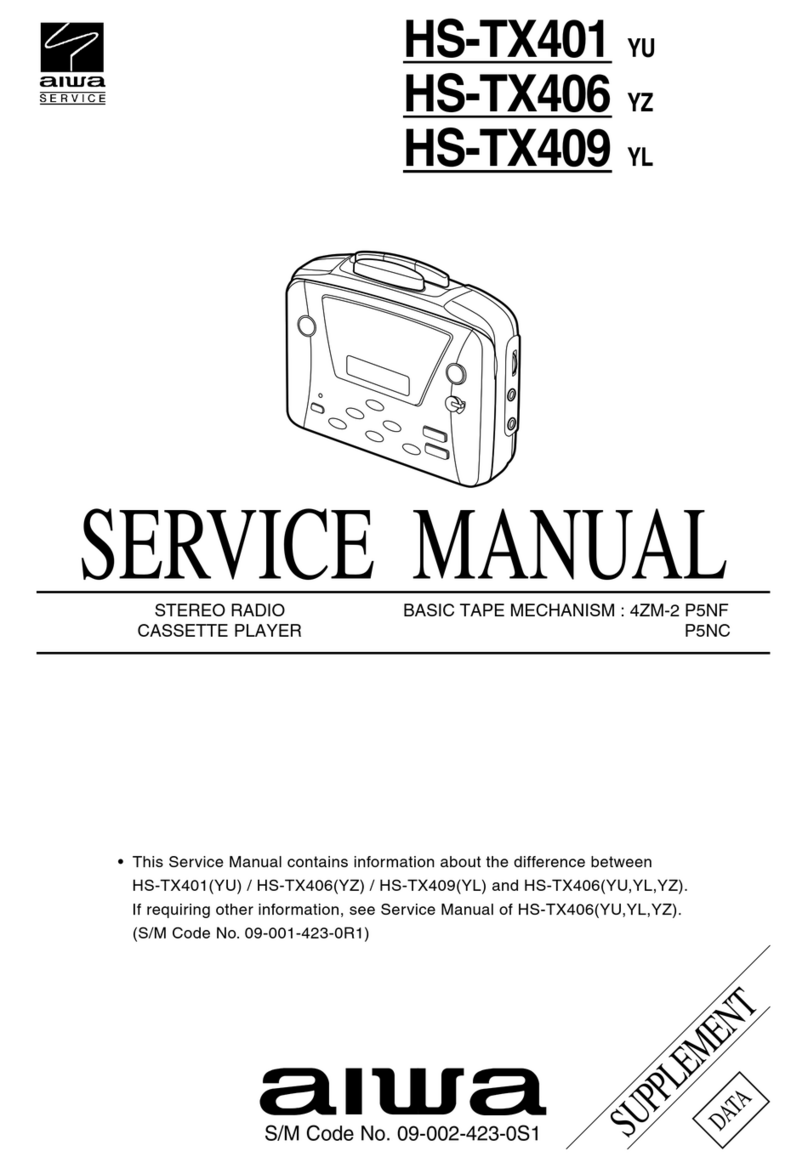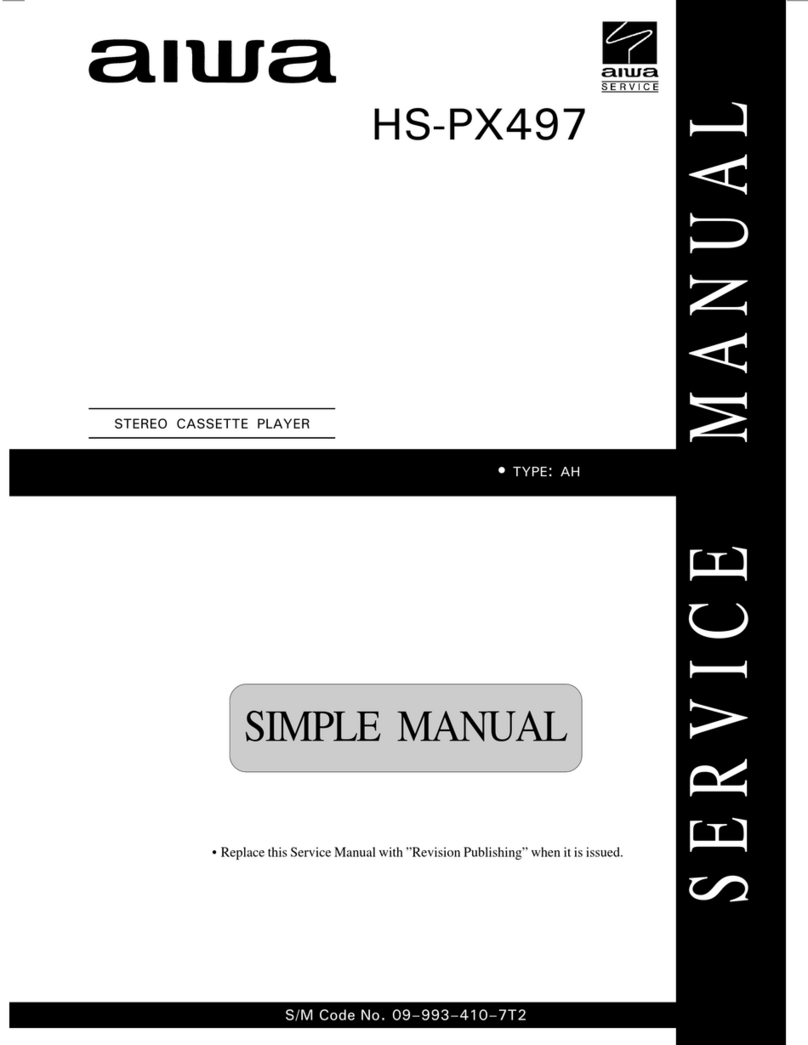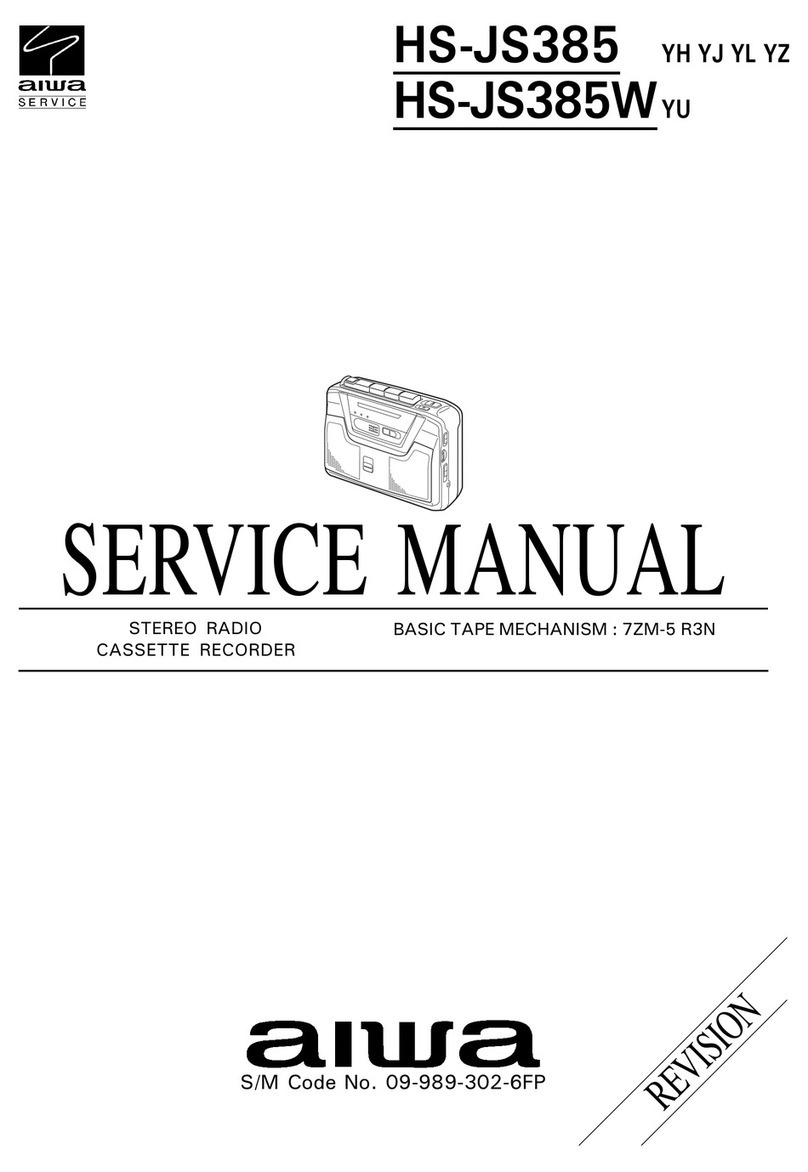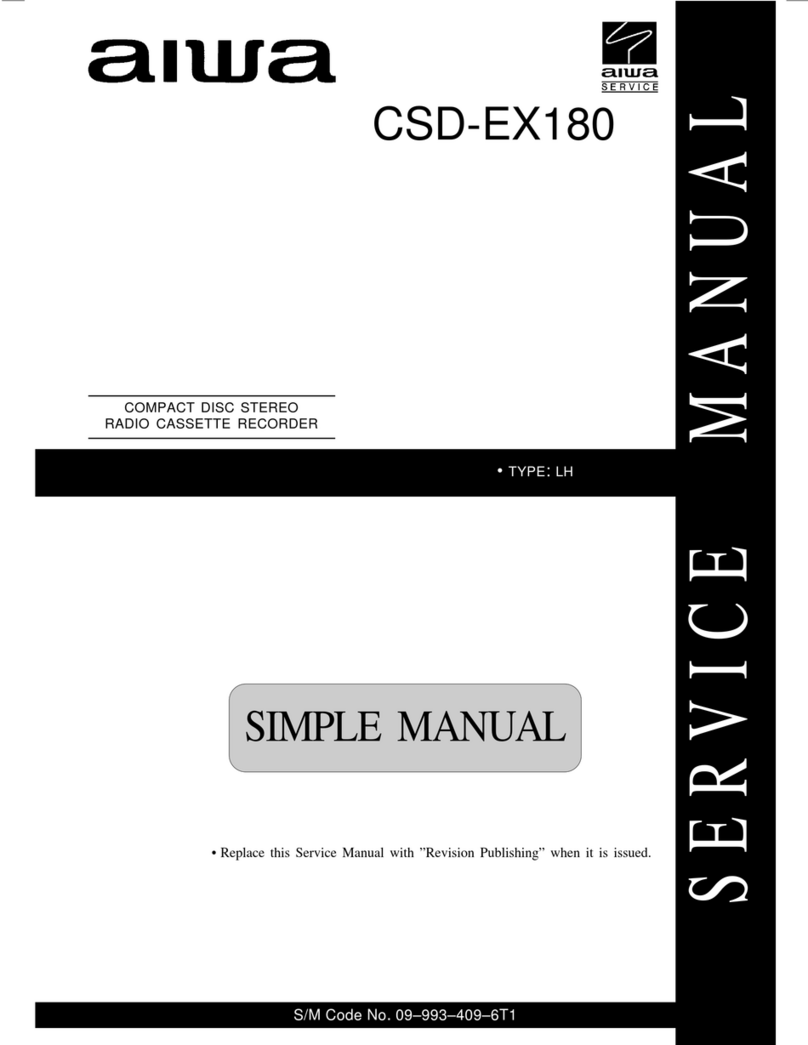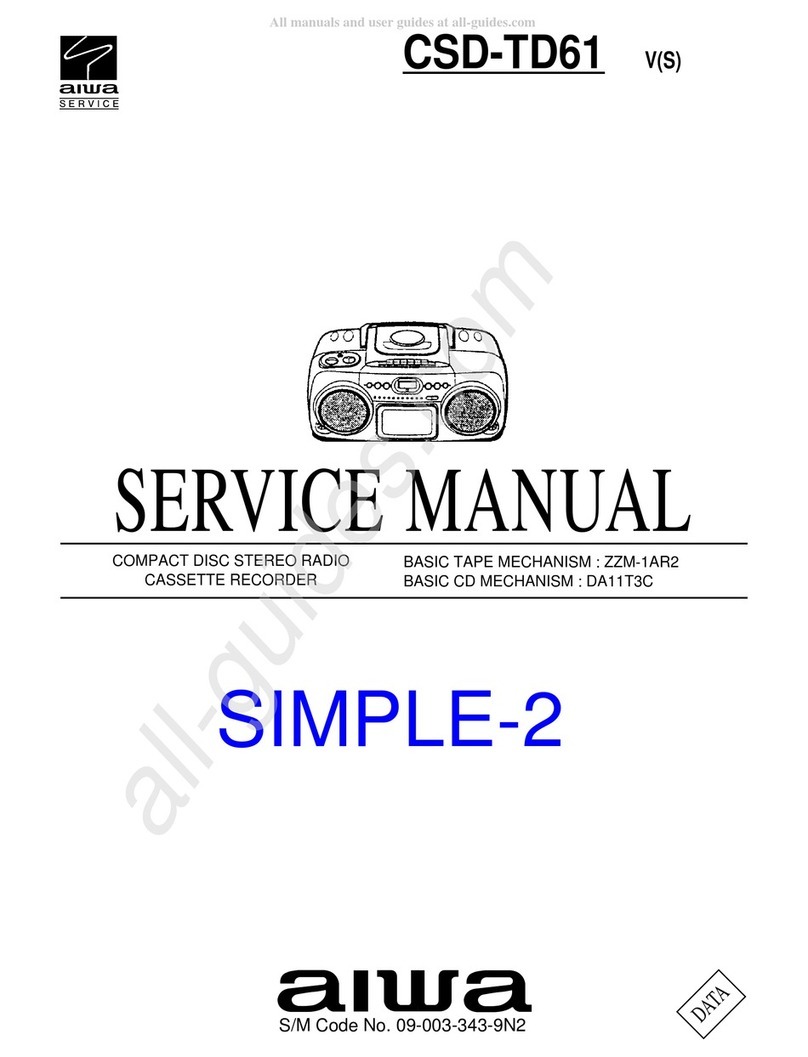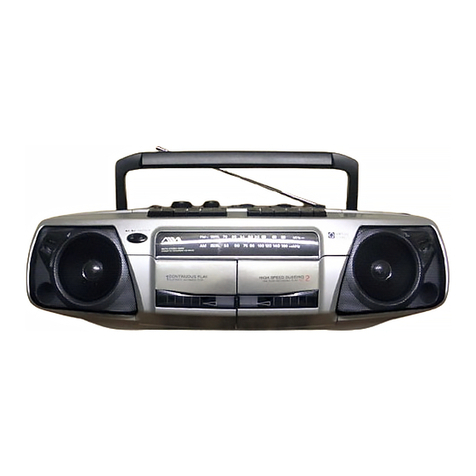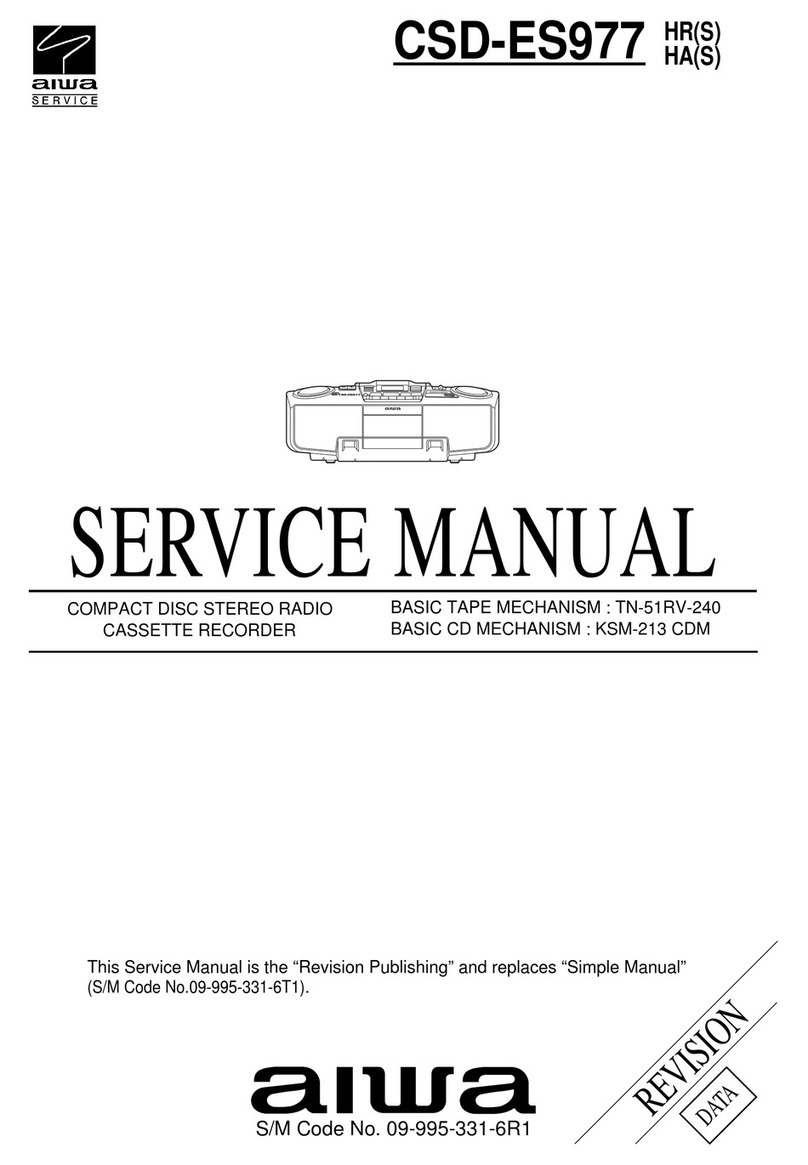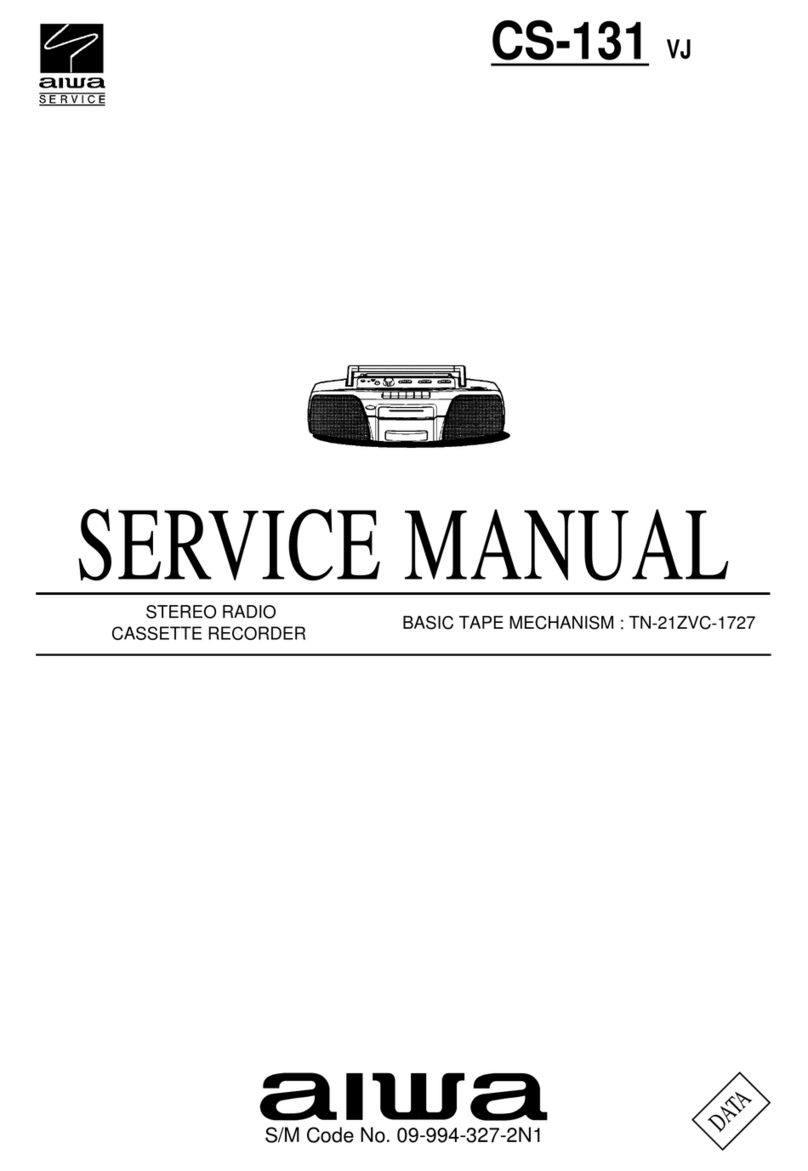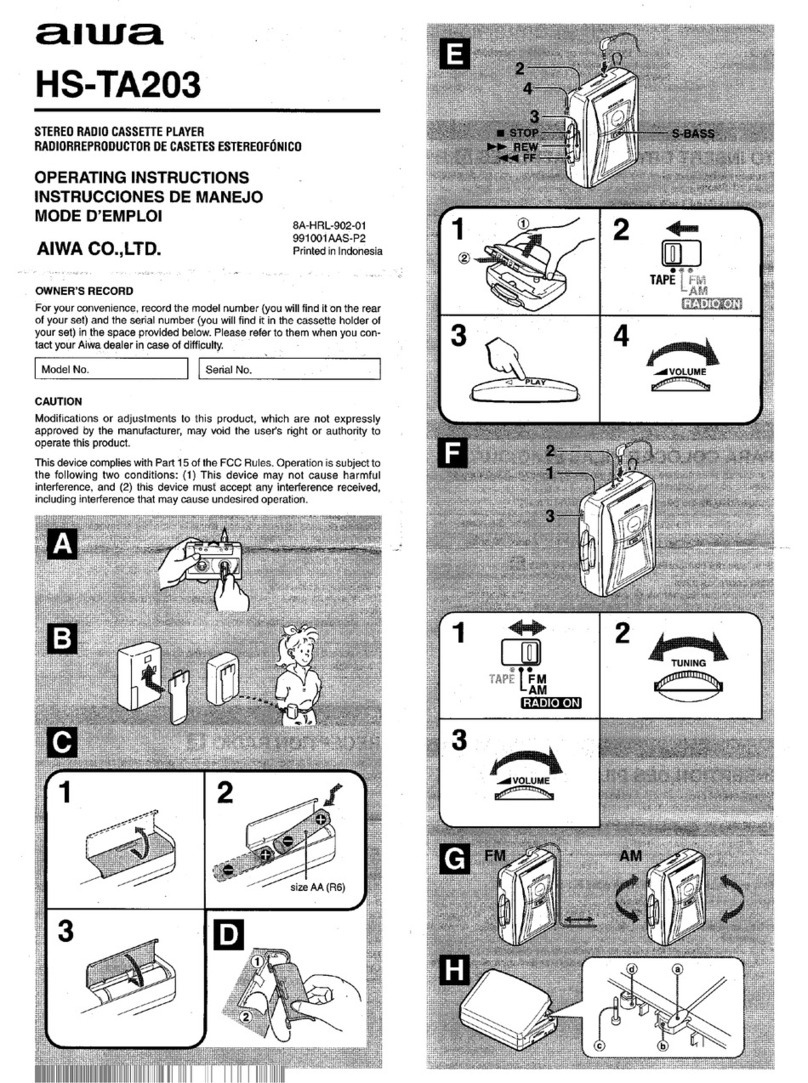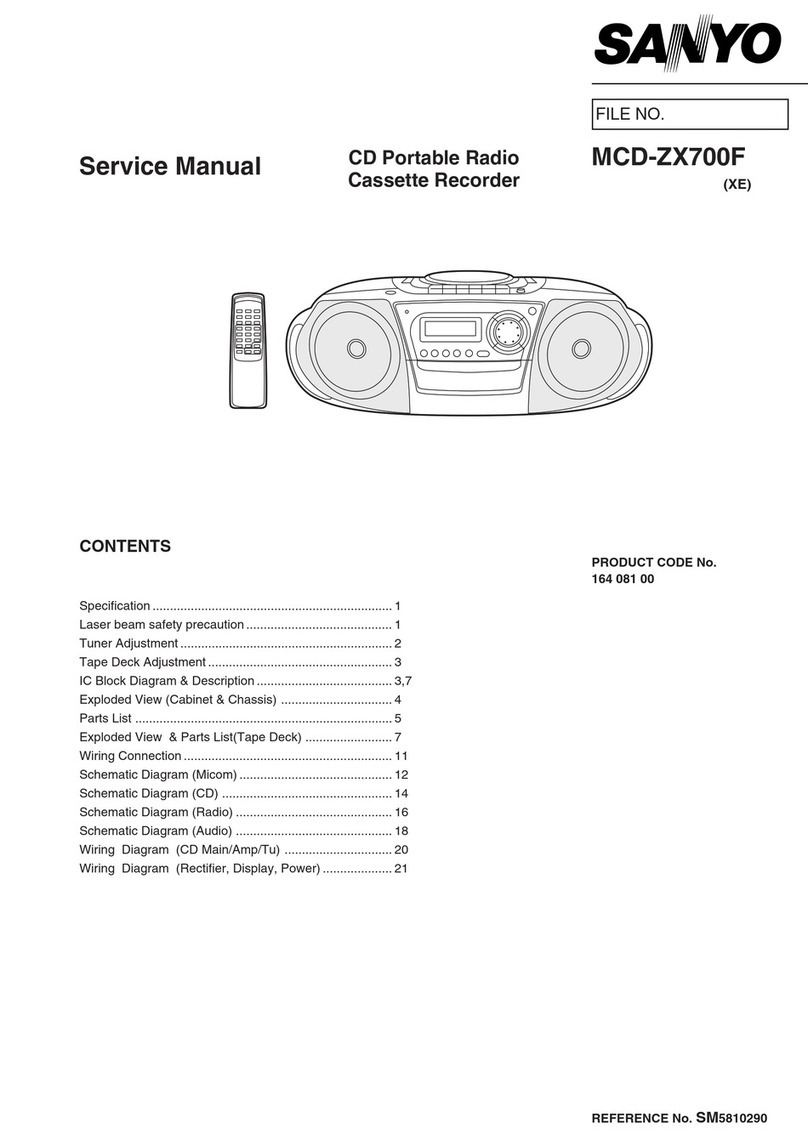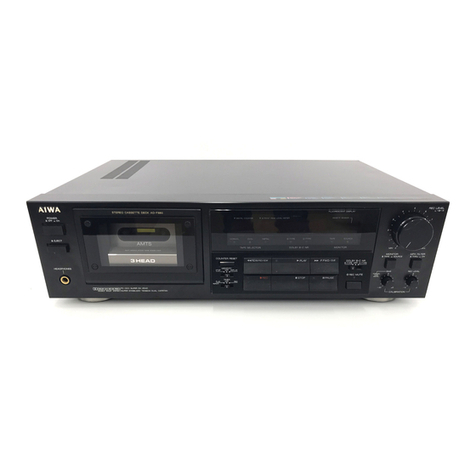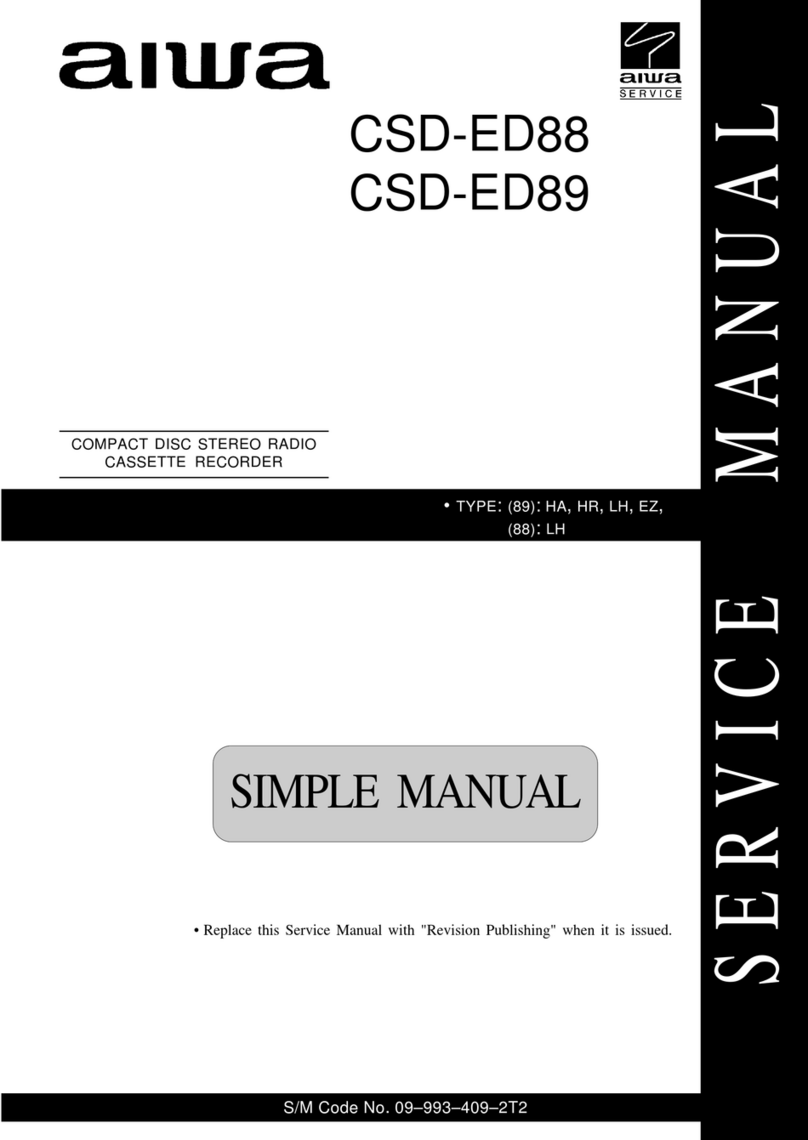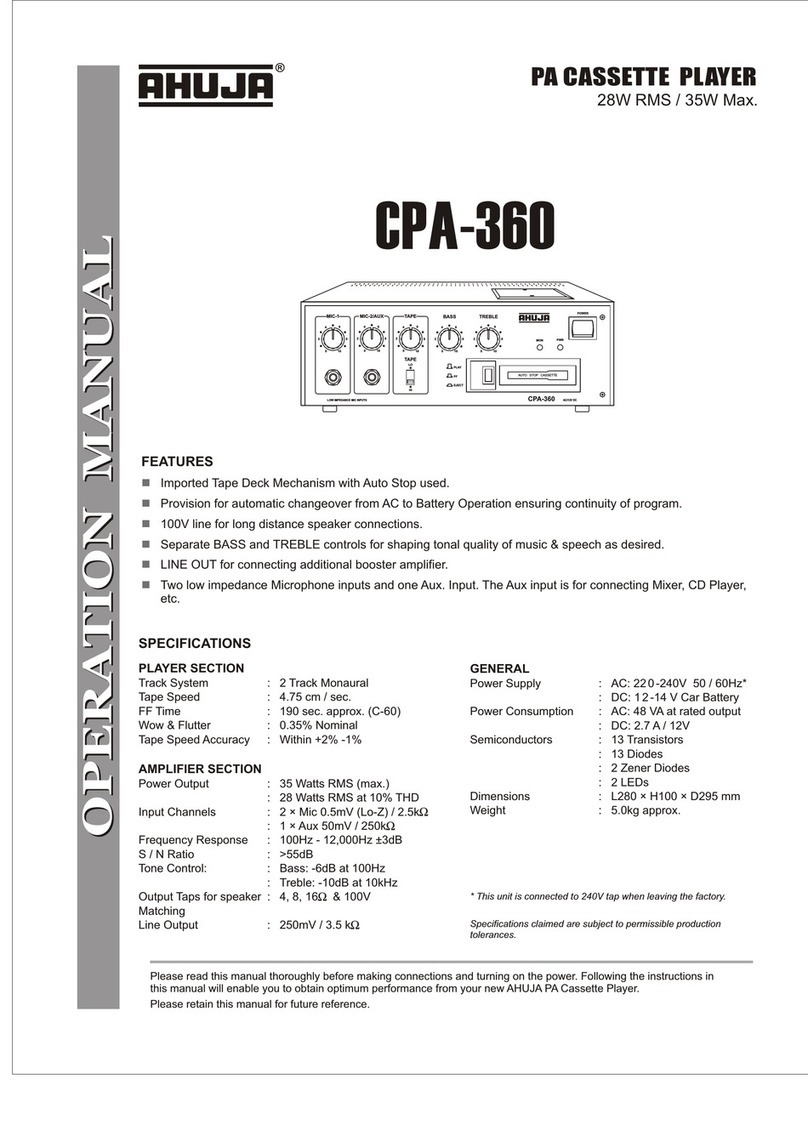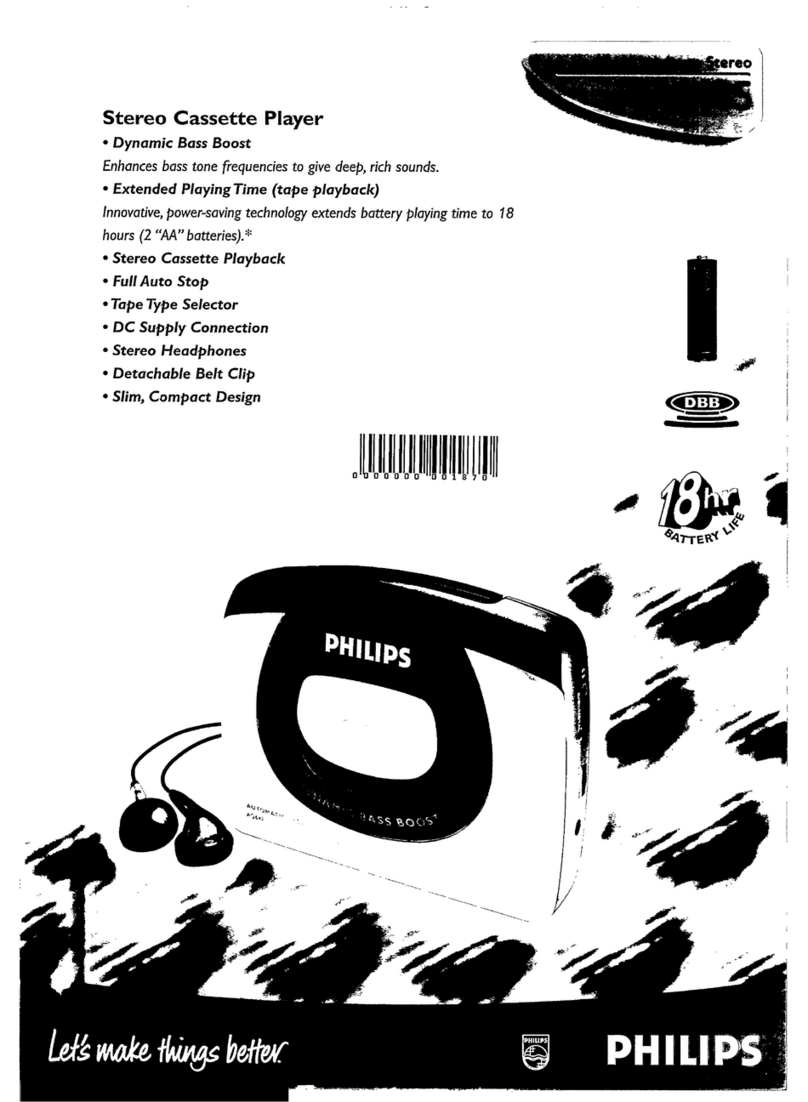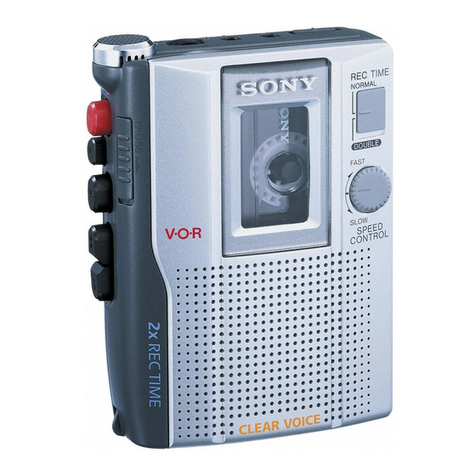
3
CSD-XD51
Unleaded solder
Boards requiring use of unleaded solder are printed with the lead-
free mark (LF) indicating the solder contains no lead.
(Caution: Some printed circuit boards may not come printed with
the lead free mark due to their particular size.)
: LEAD FREE MARK
Unleaded solder has the following characteristics.
•Unleaded solder melts at a temperature about 40°C higher than
ordinary solder.
Ordinary soldering irons can be used but the iron tip has to be
applied to the solder joint for a slightly longer time.
Soldering irons using a temperature regulator should be set to
about 350°C.
Caution: The printed pattern (copper foil) may peel away if
the heated tip is applied for too long, so be careful!
•Strong viscosity
Unleaded solder is more viscous (sticky, less prone to flow)
than ordinary solder so use caution not to let solder bridges
occur such as on IC pins, etc.
•Usable with ordinary solder
It is best to use only unleaded solder but unleaded solder may
also be added to ordinary solder.
Note on chip component replacement
•Never reuse a disconnected chip component.
•Notice that the minus side of a tantalum capacitor may be
damaged by heat.
SAFETY-RELATED COMPONENT WARNING!!
COMPONENTS IDENTIFIED BY MARK 0OR DOTTED LINEWITH
MARK 0ON THE SCHEMATIC DIAGRAMS AND IN THE PARTS
LIST ARE CRITICAL TO SAFE OPERATION. REPLACE THESE
COMPONENTS WITH SONY PARTS WHOSE PART NUMBERS
APPEAR AS SHOWN IN THIS MANUAL OR IN SUPPLEMENTS
PUBLISHED BY SONY.
TABLE OF CONTENTS
1. SERVICING NOTES ................................................ 4
2. GENERAL ................................................................... 5
3. DISASSEMBLY
3-1. Disassembly Flow ........................................................... 6
3-2. Cabinet (Top) Assy .......................................................... 6
3-3. Cabinet (Front Assy), Cabinet (Bottom) Assy................. 7
3-4. Wires................................................................................ 8
3-5. MD Block ........................................................................ 9
3-6. Cassette Holder................................................................ 9
3-7. Main Board ...................................................................... 10
3-8. Tuner Board ..................................................................... 10
3-9. Power Board .................................................................... 11
3-10. CD Lid ............................................................................. 11
3-11. CD Block Assy ................................................................ 12
3-12. Optical Pick-up ................................................................ 12
3-13. R/P Head (HRP301), TC Board ...................................... 13
3-14. Main Belt, RF Belt, Motor Assy (M301) ........................ 13
4. MECHANICAL ADJUSTMENTS......................... 14
5. ELECTRICAL ADJUSTMENTS .......................... 14
6. DIAGRAMS
6-1. IC Pin Description ........................................................... 17
6-2. Circuit Boards Location .................................................. 17
6-3. Block Diagram – CD Section – ....................................... 18
6-4. Block Diagram – Main Section – .................................... 19
6-5. Printed Wiring Board – CD Section – ............................. 20
6-6. Schematic Diagram – CD Section – ................................ 21
6-7. Printed Wiring Board
– Tuner Section – ......................... 22
6-8. Schematic Diagram – Tuner Section – ............................ 23
6-9. Printed Wiring Board – Main Section – .......................... 24
6-10. Schematic Diagram – Main Section (1/2) – .................... 25
6-11. Schematic Diagram – Main Section (2/2) – .................... 26
6-12. Printed Wiring Board – TC Section –.............................. 27
6-13. Schematic Diagram – TC Section – ................................ 28
6-14. Printed Wiring Board – Control Section – ...................... 29
6-15. Schematic Diagram – Control Section – ......................... 30
6-16. Printed Wiring Board – Power Supply Section – ............ 31
6-17. Schematic Diagram – Power Supply Section – ............... 32
6-18. IC Block Diagrams .......................................................... 33
7. EXPLODED VIEWS
7-1. Cabinet Section................................................................ 36
7-2. Cabinet (Front) Section-1 ................................................ 37
7-3. Cabinet (Front) Section-2 ................................................ 38
7-4. Cabinet (Top) Section ...................................................... 39
7-5. Cabinet (Bottom) Section ................................................ 40
7-6. Tape Mechanism Section (MF-XD55) ............................ 41
7-7. CD Mechanism Section (KSM-213RDP) ....................... 42
8. ELECTRICAL PARTS LIST .................................. 43
